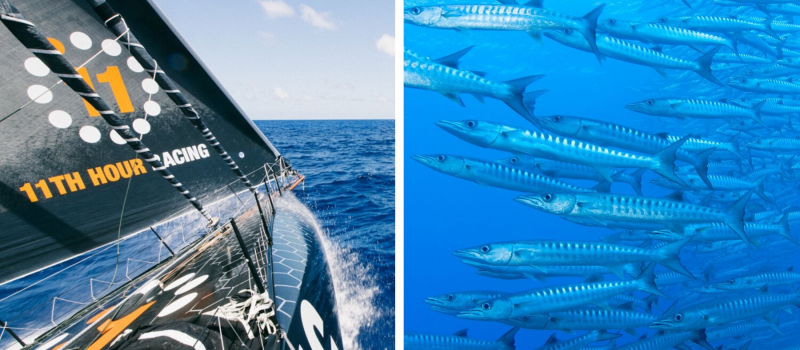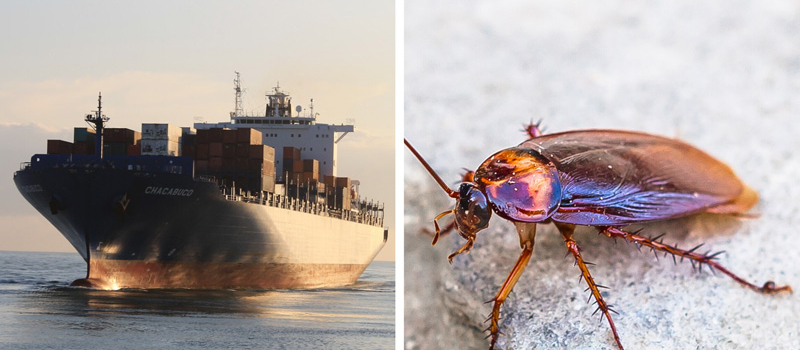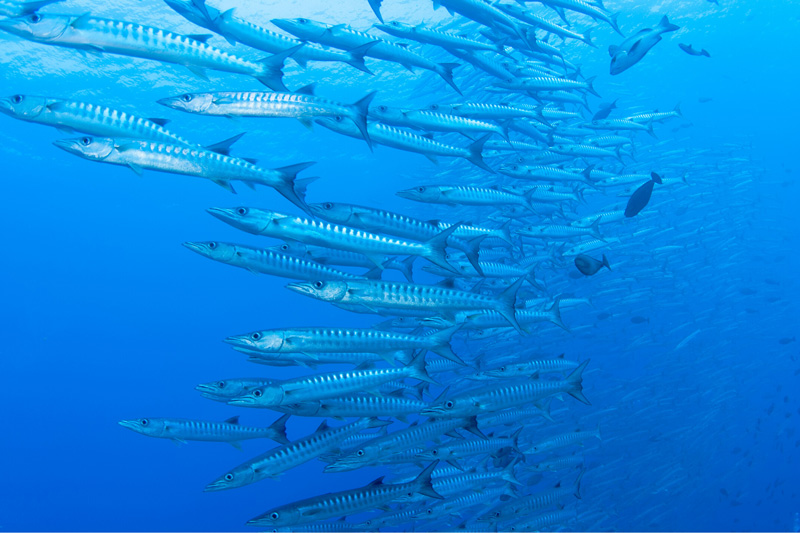#OceanHour Session 2: Biomimicry – Innovation Inspired by Nature
Ever wonder why so many structures and machines look like forms out of nature? A plane with wings like a bird, a building with an exo-skeleton like a bug for rigidity. That’s because biological organisms have evolved into the most efficient and effective system for survival and optimal functionality.
It’s called biomimicry — when humans imitate nature to solve complex problems through innovation and design. It also can often lead to more efficient and environmentally-friendly designs and processes, as in nature, there is neither waste that it cannot recycle, nor pollution that it does not know how to regulate.
The same can be done when looking at designs, materials and forms for sail racing in which the biological models of the ocean can be inspirations for all that we do as a team every day.
So it was a natural segue when 11th Hour Racing Team gathered virtually for its second #OceanHour Session this week to learn about biomimicry. Team members from all over the world on multiple continents learned from experts and researchers at the Marine Station Concarneau — an 11th Hour Racing Team grantee — The Big Bang Project and the French National Institute for Advanced Studies in Industrial Design.
Students from the institute took 11th Hour Racing Team members through various design challenges and problems faced in the field of marine mobility. They addressed concepts — like reducing turbulence and increasing acceleration by studying and selecting natural models — and then showed examples within biology how these might be solved. Did you know for instance, that the mucus on barracuda reduces turbulence by increasing the viscosity of the boundary layer on the skin? Or that if a chameleon tongue was a car, it could accelerate from 0 to 60 mph in 1/100th of a second?
“This Ocean Hour session covered a range of marine biomimicry examples and how taking cues from the natural world can ultimately help us as an industry be more gentle on the earth by adopting this circular economy school of thought in our materials, products and systems,” said Amy Munro, Sustainability Officer. “Biomimicry isn’t just something to be looked at as a basis for high performance and resource efficient industrial design, but in wonder and amazement of what nature has created — and what must be protected every day.”
Isn’t that a lesson for all of us in these times. Human intervention will not solve everything — look and respect the natural world, it has inspired our human world in ways you may not have noticed at first glance.
Exploring Potential Biomimicry Solutions for Marine Mobility
Students from the French National Institute for Advanced Studies in Industrial Design explored various solutions to issues impacting marine mobility in racing, fishing, and shipping.

Racing
Within racing students looked at how to improve the speed of a sailboat. One potential solution was to mimic the mucus on the skin of a barracuda on the hull of the boat to reduce turbulence.

Shipping
Each year nearly 1400 shipping containers are last at sea by falling off cargo ships. Can we find solutions in nature to help improve adhesion to prevent this from happening? The students looked to the cockroach to see how they are able to stick to slippery surfaces as a potential solution.

Fishing
The fishing industry threatens ocean health by overfishing, the destruction of ecosystems, and contributing to ocean waste and pollution. Students explored how to prevent bycatch by looking at how humpback whales feed in a community by creating a bubble net around schools of fish.
Supporting Training Material
To round out our knowledge on biomimicry and nature-inspired design we studied up on the topic with these additional materials:




